Smart helmets save lives, improve rides
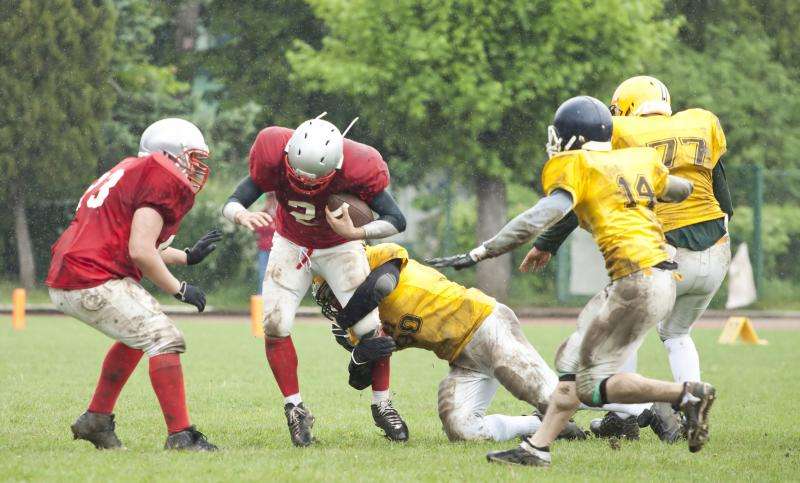
As technological advancements enable people to run faster, ride farther and hit harder, experts are using sensors to collect data that could reduce head trauma incidents for football, hockey, cycling and other sports.
Due to their increasing size and athleticism, football players endure more dangerous hits on the field than ever before, raising concerns about concussions and players' long-term health. To understand how the sport has changed, consider the following:
In 1995, the Dallas Cowboys beat the Pittsburgh Steelers in the Super Bowl. Of the 10 offensive linemen who started for the two teams, half weighed less than 305 pounds, and two were under 300. Twenty years later, the Steelers' and Cowboys' starting offensive linemen weigh an average of 317 pounds—more than 10 pounds heavier.
For years, players have benefitted from bigger body mass, improved training and better nutrition, but something else is advancing even faster than these performance enhancers: helmet technology.
"The data clearly shows that newer technologies across all manufacturers are significantly better at reducing the risk of concussions compared to the older models," said Stefan Duma, Ph.D., professor and head of the School of Biomedical Engineering at Virginia Tech, who has been collecting data on football hits since 2003.
His findings are helping manufacturers build safer helmets, and similar research has helped make it safer to run drills, play hockey and ride a bicycle. Here's how technology is helping to prevent impact injuries in both professional and casual athletes.
How Football Has Changed
In the 2015 NFL draft, a total of three of the 25 top offensive line prospects coming out of college weighed less than 305. None were below 300 pounds.
Defensive linemen have seen a similar inflation. The 1995 Cowboys starters on the D-line weighed an average of 277 pounds. This year's starters weigh an average of 288.
Charles Haley, the Dallas defensive end in the Super Bowl year and a future Hall of Famer, weighed 252 pounds, just seven pounds more than current Panthers quarterback Cam Newton—a guy he'd be chasing if Haley were still playing today.
Any fan who tunes in for football games can see the results of these size increases on a weekly basis: cringe-worthy collisions and helmet-to-helmet contact that can easily concuss and sideline players.
Measuring the Problem
The NFL's concussion problem isn't new, but after a class-action lawsuit awarded $5 million to retired players with serious medical conditions related to repeated head trauma, the League started making changes. Fortunately, experts have focused on safety at the college level for much longer.
Duma came to Virginia Tech more than a decade ago, after working on impact safety for Blackhawk helicopter pilots and the military. He got permission to put impact sensors in the Hokies football team's helmets. The helmets capture data for every practice and game, allowing Duma to build a database of more than 1.8 million hits.
"The average concussion is caused by a hit of 100 Gs," Duma said, explaining that this means the hit is 100 times the force of gravity.
"Most of the big hits you see on TV that cause an injury are in the 80 to 120 G range."
Duma's research shows that the injury-inducing Gs can come from almost anywhere. There's the initial contact of player on player, but then those bodies have to go somewhere.
"The first hit, and then a guy might hit someone's shoulder, hit the ground or hit someone's knee—that's a big one for head-injury type events," he said.
Viewers might think this is primarily a problem for quarterbacks, wide receivers and running backs, the impacts are not position-specific. For example, the offensive and defensive linemen, who bang into each other on every play, have much lower G-forces, but the average collision is still 20 to 30 times the force of gravity.
"A 20-G impact would be an aggressive pillow fight or heading a soccer ball," Duma said, noting that these players endure those hits every play, all game long. "Try heading a soccer ball for about an hour."
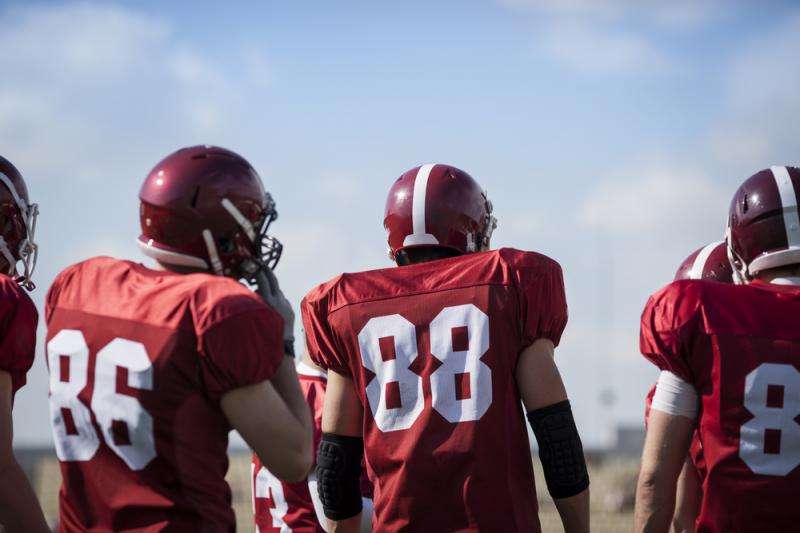
Duma's research is helping to shed light on how to minimize the effects of these game-long hits. Virginia Tech's team, and football players across the nation, have benefitted from the data in a variety of ways.
"Since we've been instrumenting the players and measuring head impact at games and practices, we've been able to share the data with the team physicians to monitor injuries and look at a player's historical performance with regard to impacts," Duma said.
This data has also helped coaches improve player safety by changing the way they run their practices.
"Some drills, like the Oklahoma Drill, had players get running starts and collide with each other at full speed," Duma said. "We were seeing impacts that far exceeded anything we ever saw in games. When we showed the coaches that, they decided to do away with those drills."
The most important byproduct of the research, however, has been a helmet-rating system. Duma said the rating system determines how effectively a particular helmet can reduce the impact on a player's head, giving poor-performing helmets a one-star rating and exemplary helmets five stars.
The difference between a top-rated helmet and a poor helmet is stark.
"A player in a one-star helmet might receive a 150-G head acceleration," Duma said. "Switch that helmet out and put a five-star on him, and it can cut it to 75-G. It can cut it in half. That's a big deal."
Switching one-star for five-star helmets is exactly what Riddell, one of the industry leaders in football helmet production, has been doing in recent years. As recently as 2013, the majority of the players in the NFL and college, including Virginia Tech's team, were wearing Riddell's most popular model—one that Duma's team graded a one-star.
Since then, Riddell developed a new five-star helmet and has been aggressively encouraging players to make the switch. Several other one-star helmets have been taken off the market, and the number of different five-star brands available has increased four-fold.
Duma's research also helped Riddell build a better facemask. On most helmets, facemasks were stiff, hard protective screens, solidly attached to the rest of the helmet. They were designed to prevent players from taking a blow to the face.
The impact research showed that the majority of hits came through the facemask, and with no give in the material, it transferred the majority of that force directly to the player's head.
New safer models feature a flexible facemask that will bend on impact to dissipate the force, directing it away from the player's head.
Additional Helmet Advancements
The new helmet lives up to expectations, according to a study led by Kevin Guskiewicz of the University of North Carolina's Matthew Feller Sport-Related Traumatic Brain Injury Research Center.
Research showed switching helmets reduced concussions in players by 53.9 percent, almost exactly matching the reduction in G-force Duma's data showed.
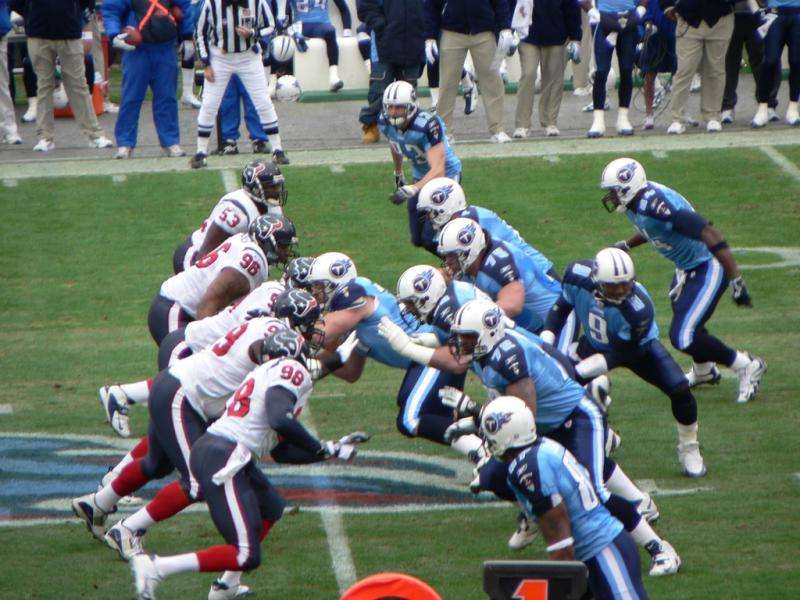
Guskiewicz and his team also collect impact data for high school football, hockey and lacrosse through helmet sensors. For non-helmeted sports like soccer, they use a patch that athletes can wear on their skin, usually above the ear, to collect impact data.
While the work has helped in helmet research, Guskiewicz, a former athletic trainer, has used his research to help develop better sideline tests for concussions, among other advances.
Meanwhile, Duma is looking to other sports, too. His group released their first hockey helmet ratings earlier this year. Despite its similarities to football in terms of collisions, hockey is miles behind in terms of head impact safety.
Of the 32 helmets tested, nine received zero stars, 16 were rated one-star and six received two-star ratings. Only one helmet received a three-star rating, and there was nothing at the four- or five-star levels.
The main reasons for the poorer performance were size—hockey helmets are significantly smaller than their football counterparts—and secure fit. Unlike football helmets, hockey helmets are adjustable, which detracts from their ability to absorb impact and keep it away from an athlete's head.
Despite the problems with hockey helmets, there are other fields even farther behind in helmet safety. Duma's future safety to-do list includes lacrosse helmets, construction helmets and cycling helmets.
"The biggest risk is bicycles," Duma said. "If you add up all the other sports, it doesn't match the number of injuries suffered by people riding bicycles."
Pro cyclist Kathryn Bertine has experienced this first hand.
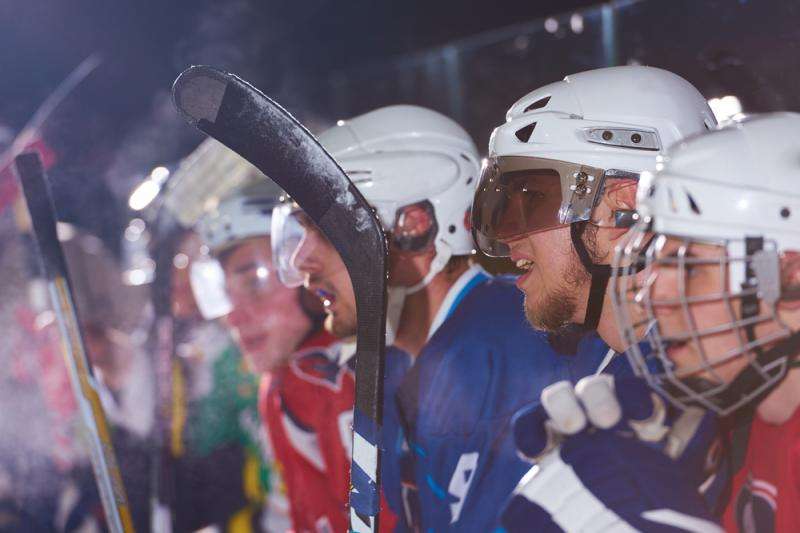
"The right helmet is key in cycling, because we have high impact crashes and a lot of concussion potential," said Bertine, shortly after finishing second in a recent race. Bertine has spent much of the last year recovering from a serious crash and still has a large scar on her elbow serving as a reminder of the danger of her sport.
"I wouldn't get on a bike without one!"
Bertine may be in the minority when it comes to helmet safety. Many cyclists believe that helmets aren't useful in this regard. Even brain surgeon Henry Marsh has come out against them, saying they're too flimsy to help protect the head and give cyclists the false illusion of safety.
Many of the more recent helmet advances haven't been devoted to protecting cyclists' heads. The LifeBEAM smart helmet monitors heart rate, calorie consumption and other biometrics to make sure the cyclist isn't over exerting. Volvo has developed a helmet that can warn drivers when they drive too close to a cyclist, and it also warns the cyclist if he or she enters a vehicle's blind spot.
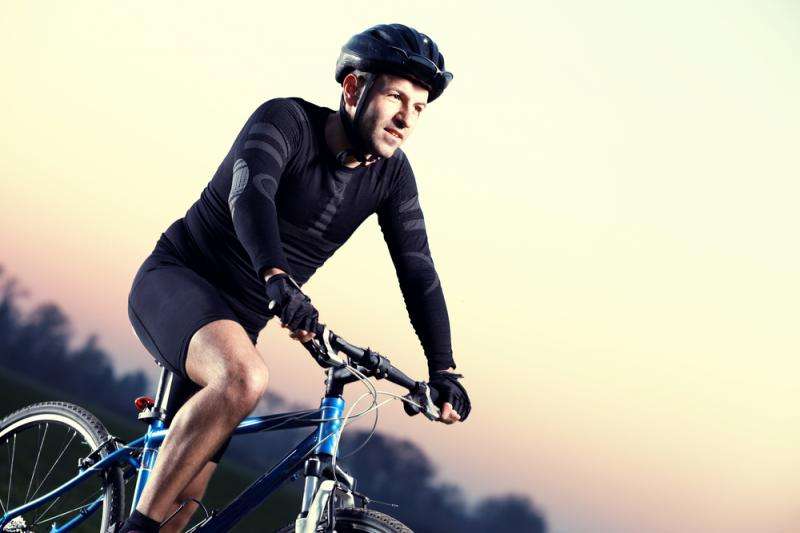
Still, Bertine has seen changes in safety over her career.
"When I started racing triathlon in the late '90s, helmets fit everyone perfectly, if everyone had the same egg-shaped head," she said. "Now the buckets are much more contoured for cranial comfort, and the good ones feel like nothing—in a good way."
While there's no one-size-fits-all solution for safety, there's additional work to be done. "No helmet is going to prevent all head injuries," Duma said. "What we're hoping to do is make the probability of one much lower."
Provided by Intel





















